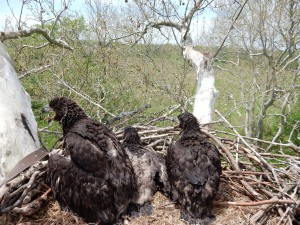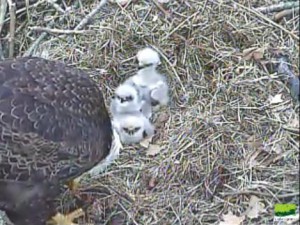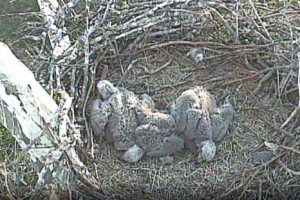Soaring High: A Month Long Celebration of the Eagle’s All-American Comeback
Happy New Year from Conserve Wildlife Foundation of New Jersey! January 2015 is the Month of the Eagle! CWF is kicking off the new year by celebrating all things eagle. Follow us on social media and be sure to check your email (sign up for our list) for weekly stories on these amazing raptors from our own eagle biologist Larissa Smith. Larissa, a wildlife biologist who has been working for Conserve Wildlife Foundation since 2000, coordinates the New Jersey Bald Eagle Monitoring Project. This month, she will involve 80 volunteers in the monitoring of 175 territorial eagle pairs in New Jersey!
By: Larissa Smith, Wildlife Biologist and Volunteer Manager
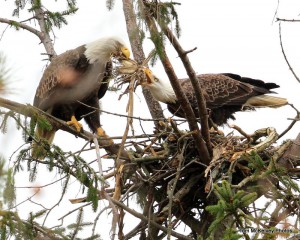
Why is January the Month of the Eagle? Besides the fact that eagles are an awesome way to start out the new year, now is the best time of year to see eagles in New Jersey, and it’s the month when New Jersey bald eagles start laying their eggs.
The New Jersey bald eagle population is increasing every year. 2014 was a record setting nesting season with 156 eagle nests being monitored! One hundred forty-six of these were active (with eggs) and ten were territorial or housekeeping pairs. In 2014, New Jersey nesting eagles broke the 200 mark and produced 201 young! The 2014 NJ Bald Eagle Project Report has more details on the 2014 nesting season.
During the months of January and February, not only are New Jersey’s nesting eagles around but wintering eagles are also in the area. Eagle pairs are busy preparing their nests for the 2015 nesting season. The majority of eagles begin incubation in February, but a handful do start in January. Last year, the first New Jersey pair began incubating on January 12th. In January and February, birds from more northern states come down to New Jersey where the winters are milder. The Delaware Bay and River are rarely frozen solid, allowing birds to continue finding food during the winter months.
The two counties in New Jersey with the largest number of eagle nests are Cumberland and Salem, so these are good areas to spot wintering eagles. Mannington Meadows in Salem County is a hot spot for eagle viewing, Forsythe National Wildlife Refuge in Atlantic County and the Delaware Water Gap in northern New Jersey. This time of year you could spot an eagle in any county in New Jersey!
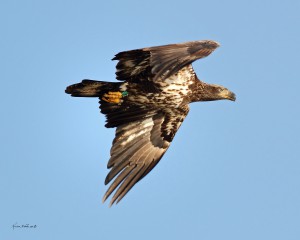
Don’t forget when eagle watching, eagles don’t have a full white head and white tail until around five years of age when they are mature. In their first four years, they can be a bit trickier to spot since their feather coloration is varied at different age stages. Please remember to respect the eagles when viewing them. Eagles are very sensitive to human disturbance during the nesting season, keep your distance from eagle nests and perched eagles. For more information on being a good eagle watcher see our brochure “Bald Eagles Nesting in New Jersey.”
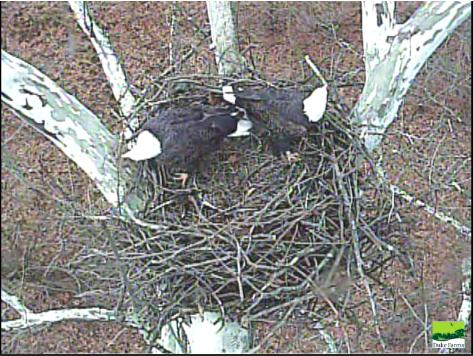
Even if you’re not able to get out to see an eagle, you can watch them from the comfort of your home. Conserve Wildlife Foundation partners with Duke Farms to broadcast a live Eagle Cam. This gives everyone the opportunity to see a pair of New Jersey eagles raise their young and learn about eagle behavior. There is also an interactive page where Eagle Cam viewers can post comments, observations and ask questions.
As you can see, January is a busy month for New Jersey eagles! We’ll keep you updated as the month progresses and detail some of our current projects such as using telemetry to track eagles. Stay tuned for more Month of the Eagle posts!
